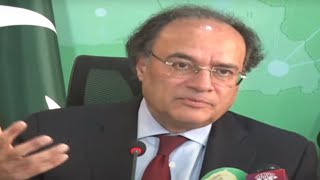There are signs of shift in economic thinking from 'inward oriented' to 'outward oriented'. Dr Reza Baqir presented the case at a conference last week. Pakistan consumption based growth averaging at 3.5-4 percent (2001-18) is similar to top 25 percent emerging economies. The additional 3 percent growth (to reach 7 percent) in other economies is attributed to exports. In Pakistan exports contribution in GDP growth is not even half a percent.
The government's role is to pave the policy framework towards enhancing global competitiveness. Once the perception of thinking change is entrenched, private sector (domestic and foreign) will take the lead. The key is to turnaround the structure of the economy to favour value-addition and to support the ease of goods and services flow in and out of the country.
Pakistan exports are largely dependent upon domestic agriculture produce. In modern days, countries excel by becoming part of the Global Value Chains (GVCs). It is missing at home. The foreign (imported) component used in processing exports is mere 5 percent. Policymakers are aspiring to adopt the Vietnam model. The foreign input in Vietnam exports is 36 percent - seven times of us.
In Pakistan, virtually no intermediate goods are being imported for re-exporting after value addition. Vietnam specialized in that. For instance, the country imports smart phones parts, assemble those and re-export. The value addition created jobs in Vietnam. The flow of goods in and out of the country created incentive for private sector (as well as public) to invest in port and inland transport infrastructure. These services created more jobs. The overall economy started revolving around international trade.
The question is what should the policymakers do in Pakistan to incentivize trade flows. The first step is to prioritize exporting sectors. SBP has enhanced the subsidized credit limits to exporters. The central bank's research department is contemplating making a scorecard-based model to shift the borrowing from 'habitual' to new entrants (or re-entrance of those who used this service in the past).
This is a great step. It will help not only the existing exporting sectors to grow but also create space for new sectors specializing in domestic value addition. However, this cannot take exports to next level. Pakistan exports are about one-tenth of Vietnam's. The real juice for Pakistan is in becoming part of GVCs. An important policy is to abolish import tariffs. Pakistan import tariff structure is not uniform and it promotes import substitution. In recent years, tariffs are used as tax revenue tool. This is a flawed approach. Commerce ministry should decide on import tariff, not finance.
The new tariff policy aims to reduce the import tariff on raw materials in a staged manner from 4-5 percent to nil. This might not be enough. FBR tax collection is skewed towards imports. 40 percent plus tax collection is at imported stage. For large array of imported goods, 17 percent GST and 10 percent WHT are deducted.
There is an option of DTRE (duty and tax remission for exporters). It's a cumbersome procedure. The big players have no issue. They spend enough on advocacy capital to get refunds. One needs inroads into government to get things done. Such schemes effectively exclude SMEs (and new players) to think about becoming part of GVCs. The government has to swallow the pill by ending unnecessary taxes at imported stage.
Virtually all the FDI in Pakistan historically came in to cater domestic demand. No foreign company invested in exporting sectors. Once regulatory hurdles are removed, the chances of both domestic and foreign investors to bet in exporting sectors may increase. The imports have to become easy for expanding exports. Period.
Some say that energy tariffs in Pakistan are too high. However, the issue is of fixed capacity charge. If new companies invest in manufacturing, electricity demand will grow and tariffs may actually come down. Some say that country's port infrastructure is not enough to cater to high trade volumes, which is true as Pakistan's trade of goods is around $75-80 billion and its two major ports are already choking. Vietnam deals with over $400 billion worth of trade.
The fine point is that once the investment starts coming in exporting sectors based on value addition in imported components, the ways to expand ports and port handling will open naturally. The private sector will start investing in it. Public private partnership can work with private investment in government owned/reclaimed land from sea. China and other countries can invest in Pakistan's ports. Similar is the argument for inland rail infrastructure. The world is hungry for opportunities. We need to give way to unleash our potential.
Experiences of Vietnam and other East Asian economies are demonstrating results. Once an economy gets into the circle of expansion, the world begins to take notice. The key is to change government culture from revenue oriented to exports and investment oriented. Exports growth could very much then become a self-fulfilling prophecy.
Ali Khizar is the Director of Research at Business Recorder. His Twitter handle is @AliKhizar






















Comments
Comments are closed.